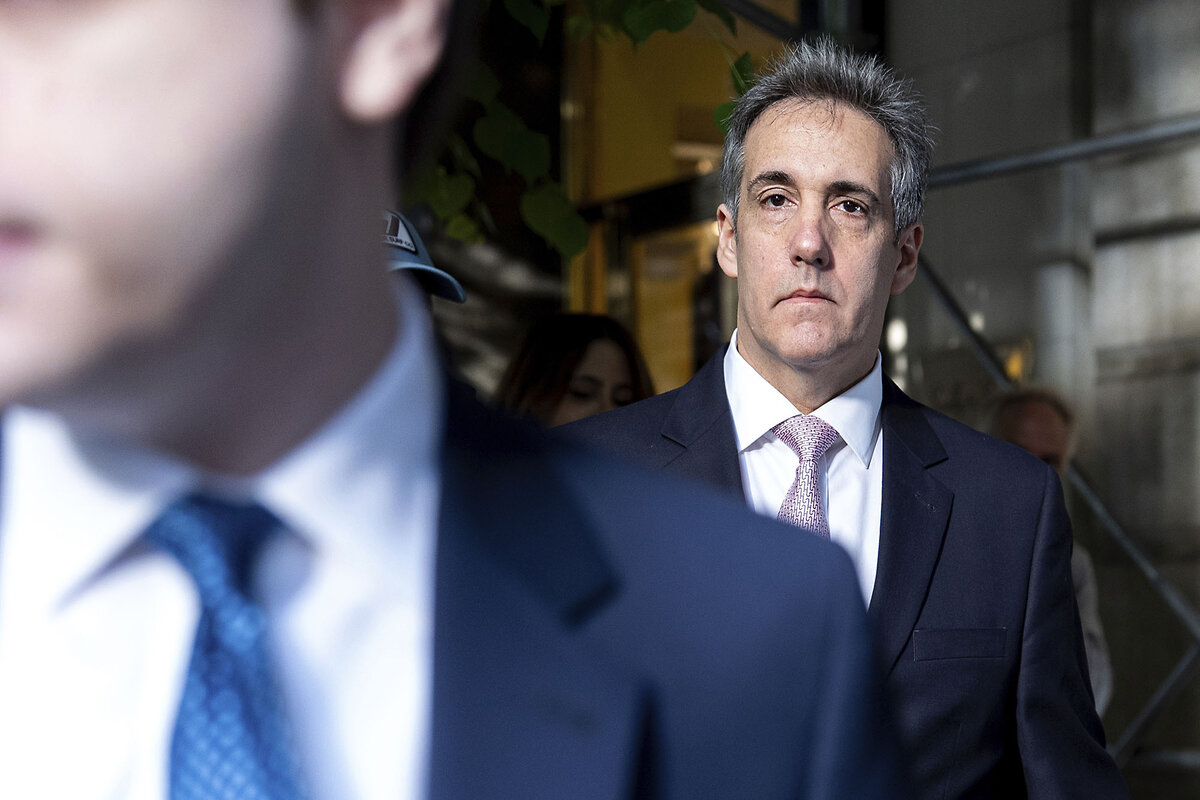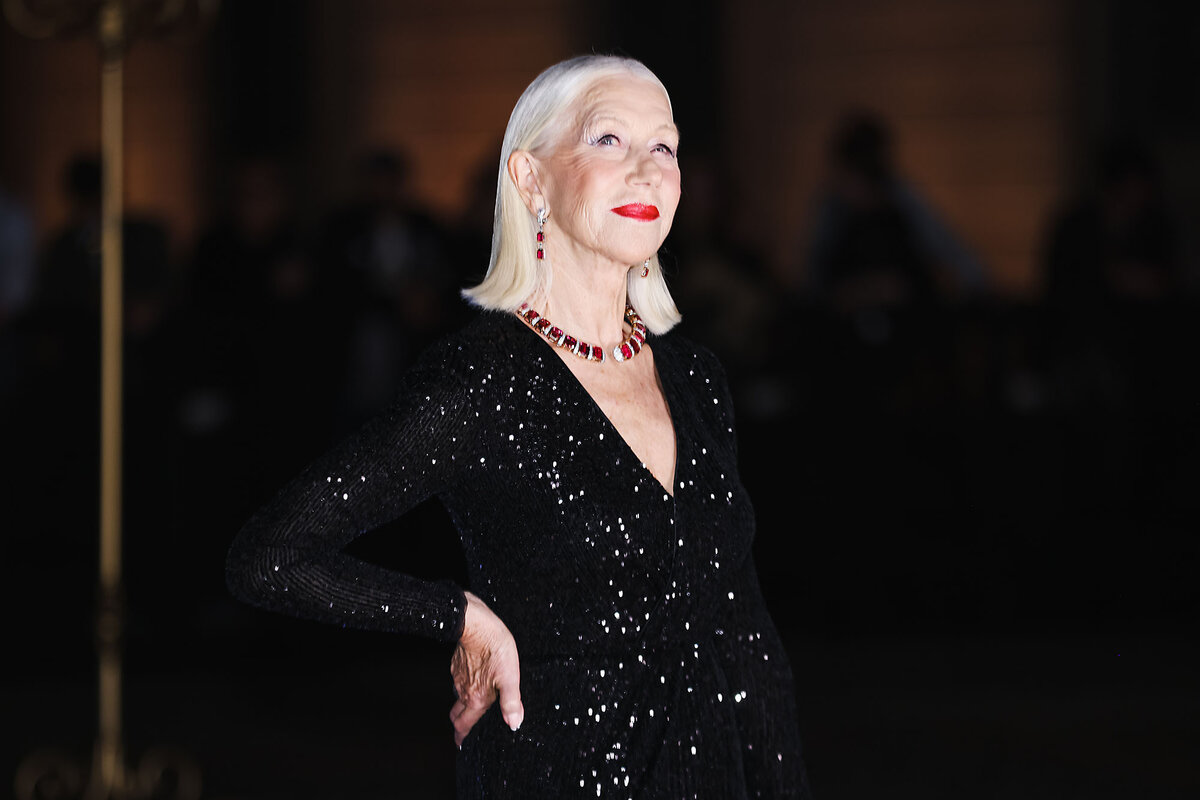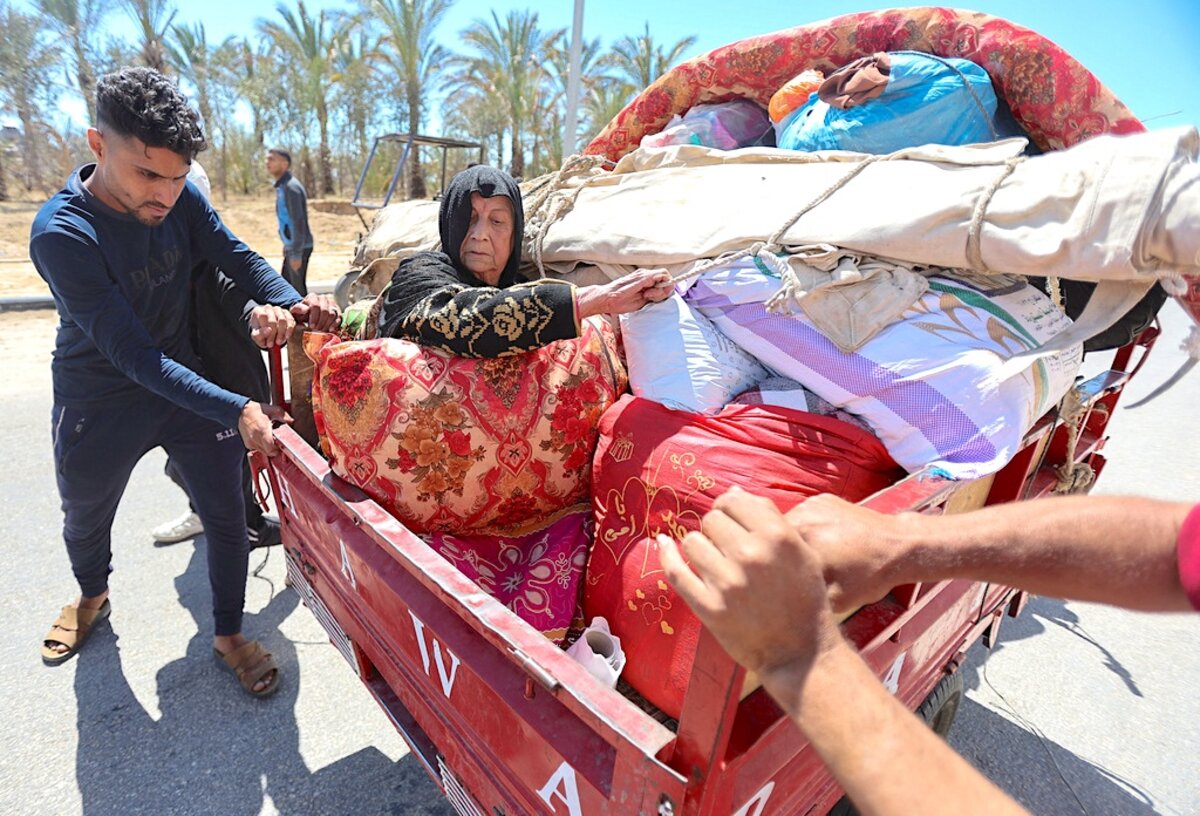The Trump trial reaches a critical moment as lawyer Michael Cohen testifies that Donald Trump approved hush money payments with the goal of influencing the 2016 election. Mr. Cohen’s veracity is now a key issue.

Why is Christian Science in our name?
Our name is about honesty. The Monitor is owned by The Christian Science Church, and we’ve always been transparent about that.
The Church publishes the Monitor because it sees good journalism as vital to progress in the world. Since 1908, we’ve aimed “to injure no man, but to bless all mankind,” as our founder, Mary Baker Eddy, put it.
Here, you’ll find award-winning journalism not driven by commercial influences – a news organization that takes seriously its mission to uplift the world by seeking solutions and finding reasons for credible hope.
Explore values journalism About usMonitor Daily Podcast
- Follow us:
- Apple Podcasts
- Spotify
- RSS Feed
- Download
Capitalism, like any system, reflects the qualities and values of its practitioners.
When it earns descriptors like “rapacious,” it’s because in some cases the fortunes of a few are being made on the backs of many, and in damaging ways. Of course, capitalism also is the lifeblood of small businesses that are very intentional about caring for employees and serving communities.
Today, Erika Page – who reported not long ago on Sweden’s “just enough” mindset – reports from northern Spain on a federation of cooperatives that marries a spirit of collectivism with an open quest for profit.
It’s a fascinating tightrope walk. Global competition remains in view. And some hierarchy remains – but it’s one that exalts fairness.
Already a subscriber? Log in
Help fund Monitor journalism for $11/ month
Monitor journalism changes lives because we open that too-small box that most people think they live in. We believe news can and should expand a sense of identity and possibility beyond narrow conventional expectations.
Our work isn't possible without your support.
Today’s stories
And why we wrote them
( 4 min. read )
Today’s news briefs
• A shift by Putin: Russia’s president taps a civilian economist as his surprise new defense minister in an attempt to gird Russia for economic war by trying to better utilize the defense budget and harness greater innovation to win in Ukraine.
• Israel pushes on: The exodus of Palestinians from Gaza accelerates as Israeli forces move deeper into the southern city of Rafah. Israel also attacked the territory’s devastated north, where some Hamas militants have regrouped.
• Senator’s trial nears: Jury selection begins in trial of Robert Menendez. The New Jersey Democrat and two businesspeople face charges in a bribery conspiracy case in Manhattan federal court, in a trial that could help determine which party controls the Senate next year.
• Georgia’s “foreign agents” bill: Prime Minister Irakli Kobakhidze vows to push ahead with a law that has sparked a political crisis, after opponents hold one of the largest protests seen since independence from the Soviet Union.
• Melinda French Gates leaves post: She announces that she will step down as co-chair of the Bill & Melinda Gates Foundation, the philanthropic organization she helped found more than 20 years ago with her ex-husband. She says that she plans future work focused on women and families.
( 5 min. read )
In war, outdated assessments and untested assumptions about one’s adversary can lead to hazardous miscalculations. The brief but violent exchange between Israel and Iran put the region and world on edge before calm was restored.
( 5 min. read )
A longtime supporter of Israel, President Joe Biden is having to contend with pro-Palestinian protesters on college campuses and elsewhere – and images that are creating a broader sense of disarray.
( 7 min. read )
Trust in the power of capitalism has taken a beating in recent years, especially among young people who see it as a driver of economic inequality. But Mondragón, Spain, has a very different story to tell.
Books
( 5 min. read )
While catching killers rather than putting together jigsaw puzzles has become the hot new hobby for senior sleuths, these books are also showing people in their 70s and 80s as vibrant, brave, and clever.
The Monitor's View
( 3 min. read )
By almost any measure from the battlefields of the world’s major current wars, the global rules for protecting innocent civilians in conflict seem to be losing their force. Russia pounded more than 30 towns and villages over the weekend, opening a new front in northeastern Ukraine. A year-old civil war in Sudan has displaced 8.2 million people.
On Friday, the Biden administration reported to Congress that Israel has likely violated international humanitarian law in its military response to the Oct. 7 attack, during which Hamas militants killed roughly 1,200 Israelis and took more than 250 hostages. The report documents the use of weapons supplied by the United States in Israeli strikes against civilian targets and aid workers during its seven-month war in Gaza. It also indicates a failure to protect innocent Palestinians from attacks by Israeli settlers in the West Bank and mistreatment of Palestinians held in Israeli prisons.
The report marks a rare rebuke of a strategic ally. But in its finer detail, it also captures how individual countries and the international community are learning to adapt the rules for protecting civilians to the evolving nature of war and those who fight it. It describes efforts Israeli forces have taken to minimize civilian harm while pursuing an enemy shielding itself within residential buildings, schools, and hospitals. It cites military and civilian investigations of alleged war crimes.
The report also chronicles how other recipients of U.S. weaponry such as Colombia, Kenya, and Nigeria are working to instill in their militaries respect for civilian command and protection of civilians. Those efforts are not exceptions. “The notion that wars are ruled exclusively by chaos and disorder hardly reflects today’s empirical reality,” wrote Ezequiel Heffes, director of Watchlist on Children and Armed Conflict, in Just Security during the height of Ethiopia’s civil war in 2022.
One reason for this, Dr. Heffes noted, is a growing trend among civil society groups, academics, and international peacemakers to educate states and nonstate actors like terrorist groups and guerrilla movements in international laws to protect civilians. That work involves promoting human safety by cultivating empathy among belligerents. As the International Committee of the Red Cross noted in March, sowing respect for international law requires preserving “the humanity of the enemy.”
Turki bin Abdullah Al Mahmoud, director of the Human Rights Department at the Qatari Ministry of Foreign Affairs and a mediator in peace talks between Israel and Hamas, agreed. “The more skill, the more knowledge, the more information, and the more background about the conflict itself the mediator has, the longer-term solution we can reach,” he told a recent seminar hosted by Georgetown University.
“As full of holes as it is, the rules-based order is the best model we’ve come up with, civilizationally, to reduce widespread war and conflict,” wrote H.A. Hellyer, a senior associate fellow at the Royal United Services Institute in London, in Foreign Policy magazine. The Biden report has drawn criticism for being both too harsh and too soft at a time of growing concern of Israel’s military conduct in Gaza. But its sober balance fits a global trend in setting justice and protection for innocent people on a foundation of understanding rather than condemnation.
A Christian Science Perspective
Each weekday, the Monitor includes one clearly labeled religious article offering spiritual insight on contemporary issues, including the news. The publication – in its various forms – is produced for anyone who cares about the progress of the human endeavor around the world and seeks news reported with compassion, intelligence, and an essentially constructive lens. For many, that caring has religious roots. For many, it does not. The Monitor has always embraced both audiences. The Monitor is owned by a church – The First Church of Christ, Scientist, in Boston – whose founder was concerned with both the state of the world and the quality of available news.
( 4 min. read )
As we reason from a spiritual basis, fears fall away, and we experience more of God’s harmony.
Viewfinder

A look ahead
Thanks for starting another week with us. Watch for us again tomorrow. Hopes for a cease-fire have soared and plummeted for the families of the Israeli hostages and for Palestinians in Gaza. Taylor Luck and Ghada Abdulfattah look at the human side of the diplomatic roller coaster.









